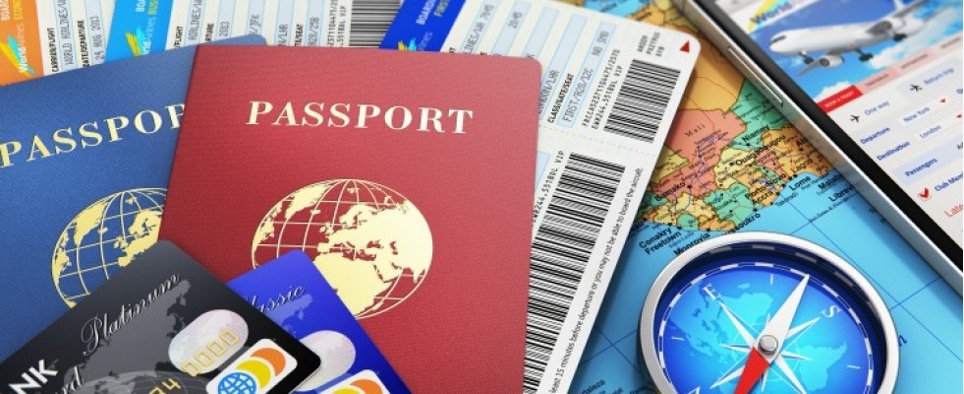In today’s digital age of booming travel, especially for tourism, obtaining a visa can be a major hurdle. The traditional process of visiting offices, queuing, and enduring lengthy procedures is not only time-consuming and inconvenient, but also costly.
To address these issues, the Vietnam Immigration Department introduced the Vietnam E-visa in February 2017. This electronic visa allows foreigners to apply online, simplifying the process. The E-visa permits a single entry into Vietnam for a stay of up to 30 days. Foreigners residing abroad and intending to visit Vietnam can apply for an E-visa either independently or through a sponsoring company.
The launch of the E-visa system has been a significant improvement, especially for foreign nationals who frequently need to obtain visas for entering or exiting Vietnam. Now, visa applications can be done anywhere, anytime, as long as you have an internet connection.
However, many people are still unfamiliar with the E-visa application process. To guide you through the steps, Peony Visa provides a detailed overview below:
1. Required Documents for Vietnam E-visa Application
If you meet the eligibility requirements for a Vietnam E-visa, prepare the following documents:
- A passport valid for at least six months from your entry date into Vietnam with at least two blank pages.
- One passport-sized photo.
- Digital copies of your passport photo and the personal information page.
- A bank card for paying the E-visa fee online.
2. Step-by-step Guide to Apply for Vietnam E-visa
The process for applying for a Vietnam E-visa includes the following steps:
Step 1: Visit the official website //evisa.xuatnhapcanh.gov.vn > Select “E-visa” > Then select “For foreigners.”
Step 2: Read the instructions carefully, tick the box “Confirmation of reading carefully instructions and having completed application,” and click “Next.”
Step 3: Upload your passport photo and the personal information page as instructed.
Step 4: Fill in the online form with your personal details, including:
- Full name
- Gender
- Religion
- Passport number
- Passport type
- Expiration date
- Expected length of stay
- Temporary address in Vietnam
- Date of entry
- Entry and exit points
- Contact details: Email and phone number
Step 5: Review your information for accuracy and receive a verification code. Make sure to save this code, as you will need it later.
Step 6: Pay the E-visa processing fee (25 USD) through the online payment platform.
Step 7: After a few days, revisit the website, enter your registration code, email, and date of birth to check your E-visa status.
Step 8: Once approved, download and print your E-visa using the provided link.
Step 9: Present your E-visa or verification code at the entry point when arriving in Vietnam.
With this easy online process, obtaining a visa for Vietnam is now faster and more convenient than ever!
3. Vietnam E-visa Application Fee
The fee for a Vietnam E-visa is $25 per person. This fee is paid through the electronic payment gateway as regulated by the Immigration Department. Please note that the E-visa fee and the electronic payment fee are non-refundable, even if your application is denied or if there are any errors in the information you provided on the application form.
If you encounter any difficulties with services such as visa applications, visa extensions, temporary residence cards, or work permits, feel free to contact us. We are always ready to assist you.
From 15th August 2023, citizens of all countries and territories around the world can apply for electronic visas (e-visas) entering Vietnam and enjoy the 90-day e-visa duration, valid for multiple entry.
Evisa for all Foreigners with e-visas are allowed to enter Vietnam via:
13 international airports: Noi Bai (Ha Noi), Tan Son Nhat (Ho Chi Minh City), Cam Ranh (Khanh Hoa), Da Nang, Cat Bi (Hai Phong), Can Tho, Phu Quoc (Kien Giang), Phu Bai (Thua Thien Hue), Van Don (Quang Ninh), Tho Xuan (Thanh Hoa), Dong Hoi (Quang Binh), Phu Cat (Binh Dinh), Lien Khuong (Lam Dong).
16 land border gates: Tay Trang (Dien Bien), Mong Cai (Quang Ninh), Huu Nghi (Lang Son), Lao Cai, Na Meo (Thanh Hoa), Nam Can (Nghe An), Cau Treo (Ha Tinh), Cha Lo (Quang Binh), La Lay and Lao Bao (Quang Tri), Bo Y (Kon Tum), Moc Bai and Xa Mat (Tay Ninh), Tinh Bien and Vinh Xuong (An Giang), Ha Tien (Kien Giang).
13 sea border gates: Hon Gai and Cam Pha (Quang Ninh), Hai Phong, Nghi Son (Thanh Hoa), Vung Ang (Ha Tinh), Chan May (Thua Thien Hue), Da Nang, Nha Trang (Khanh Hoa), Quy Nhon (Binh Dinh), Dung Quat (Quang Ngai), Vung Tau (Ba Ria – Vung Tau), Ho Chi Minh City, Duong Dong (Kien Giang).


